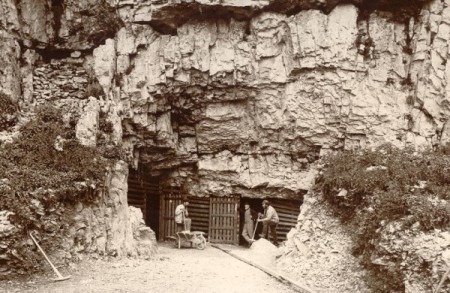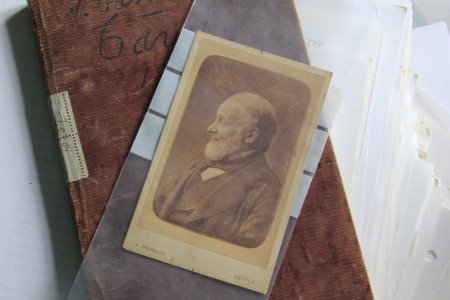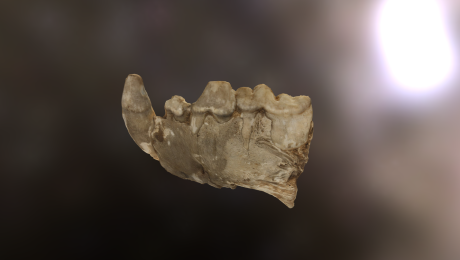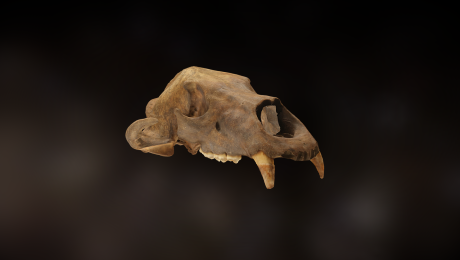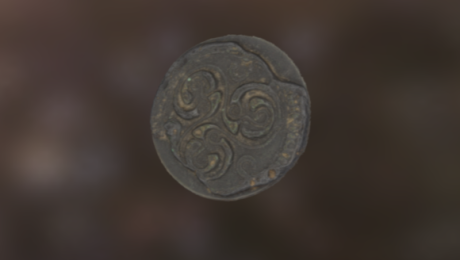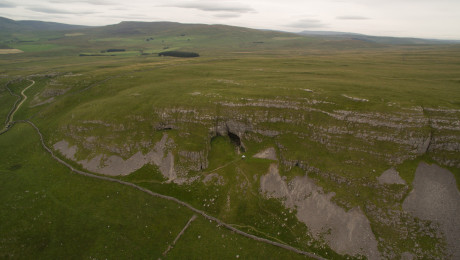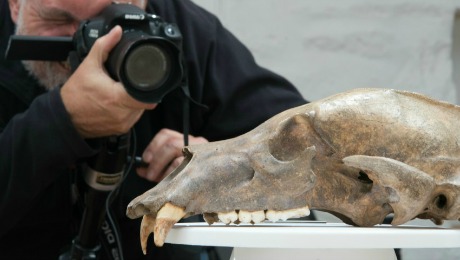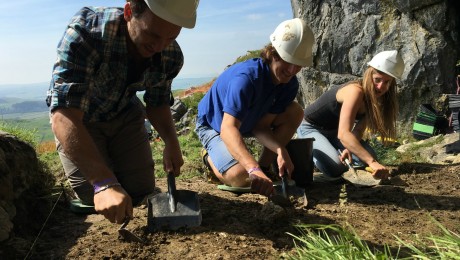The stories that lurk behind great archaeological discoveries are often as interesting and compelling as the discoveries themselves: Howard Carter and Tutankhamun’s tomb; Heinrich Schliemann and Agamemnon’s mask; two men, a dog, and Victoria Cave…
The discovery of Victoria Cave is an epic tale which began one day in the spring of 1837, just before the accession of the young Queen Victoria. Michael Horner and some friends from Settle were out walking with their dogs in the Yorkshire Dales. When one of the hapless hounds ran off ahead and disappeared down a foxhole, Michael decided to follow suit…
Opening up the hole, Michael found himself crawling down a narrow passage into a completely unknown cave with Romano-British objects still lying on the floor.
Joseph Jackson becomes an archaeologist
Michael returned a few weeks later with his friend and employer, Joseph Jackson, who discovered another chamber deeper inside. It was pitch-black and sealed from all daylight.
Originally a plumber and glazier, Joseph had no formal training in archaeology and was just 20 years old. Nevertheless, he began the first systematic excavations of Victoria Cave that Autumn. Every evening after work, he would come up and spend the night excavating the pitch-black chambers by candlelight for no reward other than to satisfy the curiosity of his friends and neighbours.
Soon, he had amassed so much evidence that in 1840, he contacted Charles Roach Smith, an expert in Roman history. Together they published the first evidence that Romans had used the cave. Later that year, Joseph found something much, much older: a hyena’s jawbone. And that was just the beginning.
Victoria Cave hits the big time
By the 1860s, the hunt for the earliest humans was on. The Victorians were fascinated by ‘bone caves’ in which they thought they might have the possibility finding the ‘missing link’, along with other long extinct animals. And if there was one thing Victoria Cave had, it was plenty of animal bones.
The oldest layer of bone (which is now known to be 130,000 years old) turned up the remains of hippo, narrow-nosed rhinoceros, straight-tusked elephant and spotted hyena. Another layer, which is now known to have formed after the end of the Ice Age around 15,000 years ago, included brown bears, wild horse, reindeer and a lance point that would turn out to be the earliest evidence that humans had reached the north of England after the last glaciers had melted.
Eventually, Victoria Cave caught the attention of some of the most prominent figures in mid-Victorian science, including both Charles Lyell and Charles Darwin. In 1869, they formed the Settle Cave Exploration Committee, and large-scale excavations began the following year in 1870. The hunt was on to find skeletal evidence of a missing link to support Darwin’s theory of evolution. Joseph Jackson was promoted and appointed site superintendent, in charge of the excavations. Having started the project out of his own curiosity, he was now employed as a professional archaeologist in his mid 50s, working under some of the leading authorities of the day.
Lost to science for a century
At the time, neither archaeologists, geologists nor scientists of any other persuasion knew much about climate change during the Ice Age, and they were just beginning to explore the possibility that it consisted of repeated cycles of warm and cold.
As the excavations continued throughout the 1870s, Victoria Cave looked set to provide the first evidence that this was the case, and to become a star of the geological and archaeological world. But things suddenly turned sour when two of its experts, Richard Tiddeman and William Boyd Dawkins, fell out over some of the evidence.
Tiddeman believed that Victoria Cave’s layered deposits of laminated clay showed that the Ice Age was actually a series of warm and cold phases, and not one continuous big freeze, but this idea was anathema to Dawkins. To protect his professional standing, Dawkins accused Tiddeman of making things up, and through repeated personal attacks, convinced his fellow scientists to dismiss Tiddeman’s excavations as flawed.
Thankfully, Tiddeman wasn’t the only one who saw Dawkins for what he was. In 1881 the geologist James Geikie described Dawkins as ‘a vain cocky humbug’ complaining that
it is monstrous that such a nincompoop in physical geology should be allowed to strut about as an authority
Unfortunately, it took another 30 years before Tiddeman’s ideas were generally accepted, and in the meantime, Victoria Cave was forgotten by the scientific world.
The arrival of the Pig Yard Club
It wasn’t until the 1930s that Victoria Cave was re-discovered. This time, it was again due to a group of working men, led by Tot Lord, a charismatic local councilor, green grocer, dealer and amateur archaeologist with a keen interest in cave exploration.
After returning from the Great War, Tot started tracking down as many artefacts from Joseph Jackson’s 1870s excavations as he could find, and set up a local society which met in a building at his father’s pig yard. Calling themselves the Pig Yard Club, they continued work at Victoria and surrounding caves, building up a vast collection of paleoenvironmental and archaeological remains.
Since then, this archive has been carefully looked after and investigated by Tot’s family, in particular his grandson Tom, who has extensively published research about the cave and archive in academic journals. Victoria Cave is now recognized as an internationally important site that has produced groundbreaking evidence, from the first proof that the Ice Age was cyclical, to the last evidence of wild lynx in the United Kingdom.
None of these discoveries would have been possible without the collaboration between enthusiastic members of the public and the scientific community. It’s now time to carry on the work that these local societies started and bring this internationally-important collection to the attention of the world.
